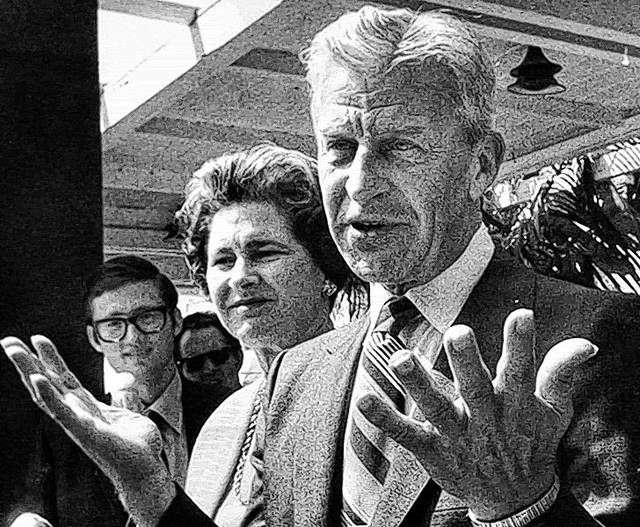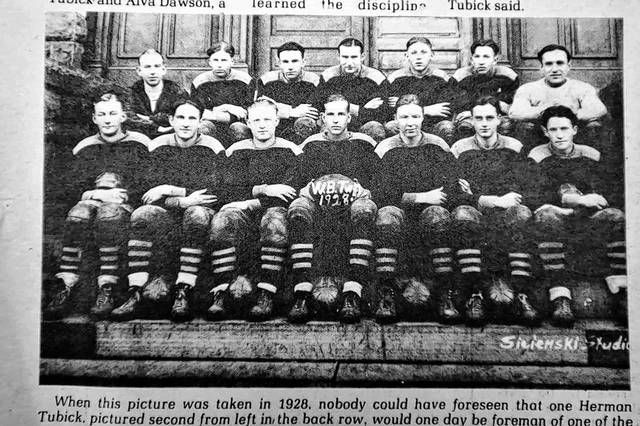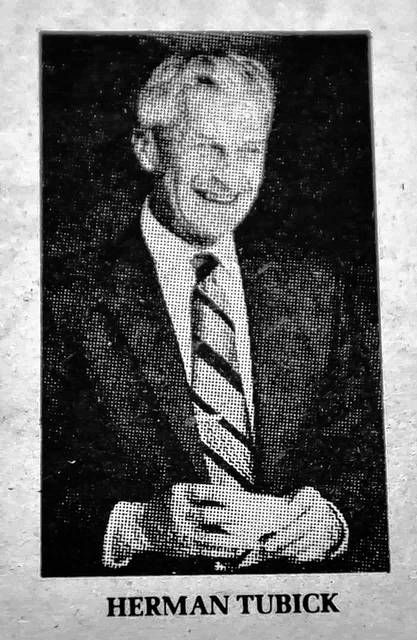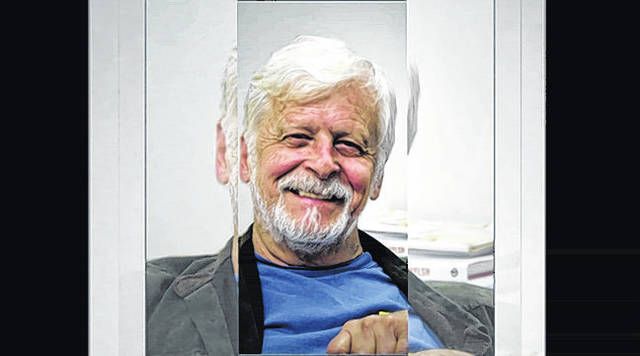Click here to subscribe today or Login.
WILKES-BARRE — The jury foreman in the sensational Manson Family trial in 1971 grew up in Carey’s Patch in Ashley, and later moved to Wilkes-Barre Township.
Herman Tubick was born Sept. 30, 1912, and died on Dec. 24, 1985, at Monterey Park, Los Angeles.
Tubick was a mortician who, according to published reports, liked to live a quiet life. That all changed when he was selected to head the jury of one of the most publicized trials in U.S. history.
Bob Heim, a local cartoonist/writer who lives on South Franklin Street in Wilkes-Barre, interviewed Tubick twice about the Manson trial — in 1971, shortly after the verdict was announced, and again in 1976, for Heim’s Northeast Magazine’s inaugural issue.
Heim provided a copy of the Northeast Magazine article. Tubick was 62 at the time of Heim’s interview.
Tubick played on the first high school football team at Wilkes-Barre Township High School. He left Northeast Pennsylvania in 1931, settling in California where he became a mortician.
In the interview, Tubick told Heim that he became foreman of the Manson trial jury by a coin flip. Charlie Manson, the notorious leader of the “family” responsible for the August 1969, grisly murders of pregnant actress Sharon Tate and six others, died Sunday night after nearly a half-century in prison. He was 83.
Manson died of natural causes at a California hospital while serving a life sentence, his name synonymous to this day with unspeakable violence and depravity.
Heim was able to get Tubick to relate the story of how he became foreman of the jury of seven men and five women. The 12 jurors voted for a foreman and Tubick tied with Alva Dawson, a former deputy sheriff, who wanted to concede to Tubick. Tubick insisted on another ballot, and again it was a tie. So a coin flip was used to decide who would be foreman and Tubick won.
They used a dime which landed in the middle of a 14-foot table, rolled to the edge, and dropped to the floor,” Tubick told Heim. “It wobbled to a water cooler and came to rest on its edge. Dawson said she had enough, but Tubick insisted on another flip, which he won.”
Vincent Bugliosi Jr., the Los Angeles County deputy district attorney who was the prosecutor in the Manson case and author of the book “Helter Skelter,” described Tubick as “a deeply religious man who began and ended each day with a silent prayer,” and who had been “a stabilizing influence during the long sequestration” of the jury. Tubick was 56 at the time of the Manson trial.
In the Heim interview, Tubick said he was proud of his Northeast Pennsylvania roots and said he benefited from all the people he had met and the contacts he made while growing up in Wilkes-Barre Township.
“From the football team, his teachers, and his parents — Paul and Rose Tubick who lived at 511 Blackman St. — Herman Tubick learned the discipline which was bolstered in the Marine Corps following graduation from high school,” Heim wrote.
Tubick served in Nicaragua and China prior to World War II, later lived in Detroit and Denver before settling in California.
During the interview with Heim, Tubick was asked if his experience as the Manson jury foreman and the subsequent publicity had changed him or his life in any way.
“My life hasn’t changed,” Tubick told Heim. “I’m the same guy I always was. I feel the jury did its duty, but I won’t feel offended if the death sentence isn’t carried out.”
As Heim noted, the death sentences given Manson, Susan Atkins, Leslie Van Houten and Patricia Krenwinkel were commuted to life in prison after the U.S. Supreme Court ruled that capital punishment as generally applied by most states, was unconstitutional.
The trial began on July 24, 1970, and the verdicts were rendered on Jan. 25, 1971. Te jury listened to testimony for nine and a half months and deliberated for 42 hours and 40 minutes during a nine-day period.
When Heim interviewed Tubick, he was living in Monterrey Park, California, with his wife, the former Helen Ostenberger of Detroit, and he was working at Rose Hill Memorial Park, which Tubick described as the world’s largest cemetery.
The New York Daily News published this on Jan. 26, 1971:
“Jury Foreman Herman Tubick, mortician, told the judge a verdict had been reached, and handed 27 slips to a bailiff. The judge looked them over and gave them to clerk Gene Darrow, who read each in a loud voice that echoed in the tense, packed courtroom.”








